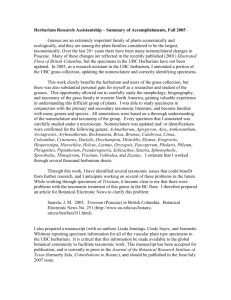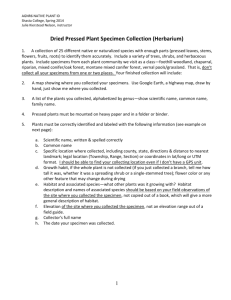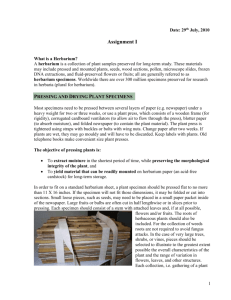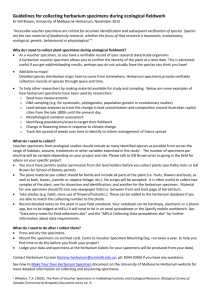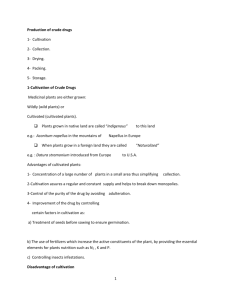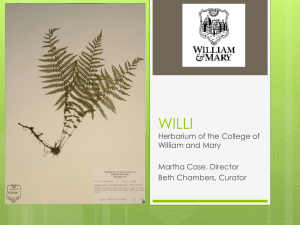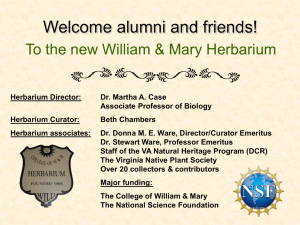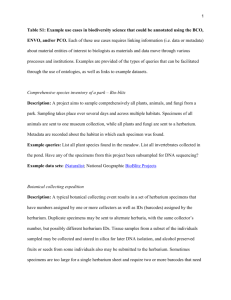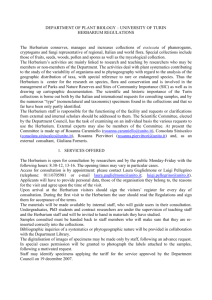Destructive Sampling Policy
advertisement
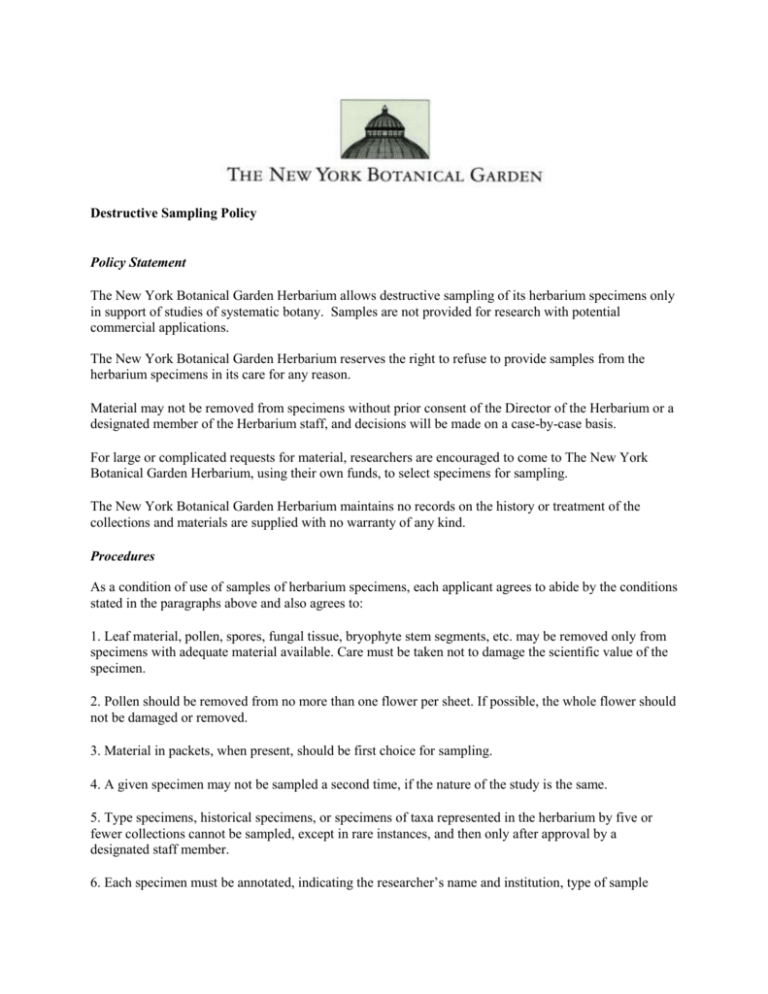
Destructive Sampling Policy Policy Statement The New York Botanical Garden Herbarium allows destructive sampling of its herbarium specimens only in support of studies of systematic botany. Samples are not provided for research with potential commercial applications. The New York Botanical Garden Herbarium reserves the right to refuse to provide samples from the herbarium specimens in its care for any reason. Material may not be removed from specimens without prior consent of the Director of the Herbarium or a designated member of the Herbarium staff, and decisions will be made on a case-by-case basis. For large or complicated requests for material, researchers are encouraged to come to The New York Botanical Garden Herbarium, using their own funds, to select specimens for sampling. The New York Botanical Garden Herbarium maintains no records on the history or treatment of the collections and materials are supplied with no warranty of any kind. Procedures As a condition of use of samples of herbarium specimens, each applicant agrees to abide by the conditions stated in the paragraphs above and also agrees to: 1. Leaf material, pollen, spores, fungal tissue, bryophyte stem segments, etc. may be removed only from specimens with adequate material available. Care must be taken not to damage the scientific value of the specimen. 2. Pollen should be removed from no more than one flower per sheet. If possible, the whole flower should not be damaged or removed. 3. Material in packets, when present, should be first choice for sampling. 4. A given specimen may not be sampled a second time, if the nature of the study is the same. 5. Type specimens, historical specimens, or specimens of taxa represented in the herbarium by five or fewer collections cannot be sampled, except in rare instances, and then only after approval by a designated staff member. 6. Each specimen must be annotated, indicating the researcher’s name and institution, type of sample taken, nature of study (e.g., molecular, anatomical, pollen), date of removal, and identification of the specimen accepted by the researcher. 7. Use of specimens from the New York Botanical Garden Herbarium must be cited in any resulting publication, and a copy should be sent to the Director. 8. For molecular studies, please submit a Request for Permission to sample herbarium specimens. If permission is granted, sampling of specimens for molecular studies is further subject to conditions of a Material Transfer Agreement. 9. For anatomical or morphological studies for which permanent pollen, spore, or leaf slides or micrographs are created from the specimen samples: Duplicates must be returned to The New York Botanical Garden Herbarium. Each slide or micrograph should be labeled with the name of the taxon, the collector's name and number, and the country of collection of the voucher specimen, and the method of preparation of the slide (e.g., acetolysis, etc.). If such a study is a survey that requires extensive sampling, permission should be requested in advance from the Director of the Herbarium. Please sign a copy of this form and return it with your sampling request to the Director of the Herbarium, The New York Botanical Garden, Bronx, NY 10458-5126; or as an email attachment to either cryptogamicshippingoffice@nybg.org or phanerogamicshippingoffice@nybg.org. Printed Name of Institution _____________________________________________________________ Printed Name of Researcher and email or other contact information ____________________________________________________________________________________ Signature of Researcher ________________________________________________________________ Date _____________________________ NY Loan Number ____________________________ Taxa to be Sampled (species names)_______________________________________________________ Nature of Project (anatomy, pollen, spores, etc.)______________________________________________ August 2014

